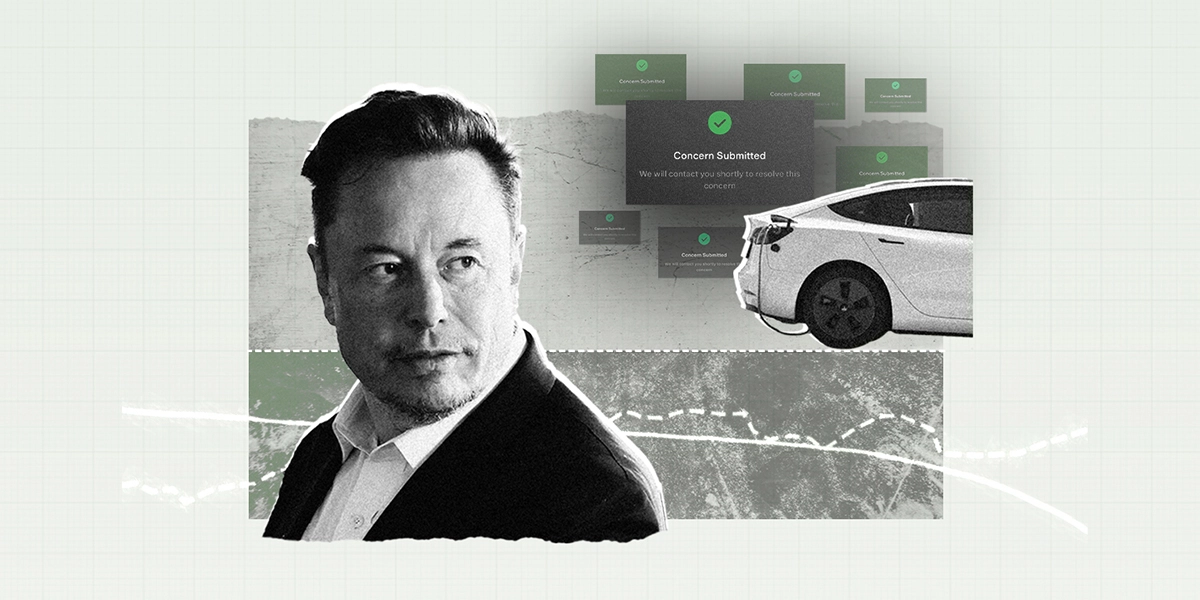Tesla has consistently exaggerated the driving range of its electric vehicles, reportedly leading car owners to think something was broken when actual driving range was much lower than advertised. When these owners scheduled service appointments to fix the problem, Tesla canceled the appointments because there was no way to improve the actual distance Tesla cars could drive between charges, according to an investigation by Reuters.



I thought the range was rated by a 3rd party (EPA in the US), is that not the case? They say EPA est. on the website at least but not sure exactly what that means.
It is, but there’s a big “but” with that. When the range is determined by agencies like the EPA, the car is allowed to run in the most optimal configuration, meaning:
This way they get an artificially inflated official range. Now when a customer buys the car, loads in all their stuff and people and actually uses heating/AC/onboard entertainment/autopilot/… and drives in suboptimal weather their range would instantly show as much less than the official rating. And this is where they were cheating, and would show a range number that was closer to the artificially inflated official one.
To be fair, though, when determining “official” fuel consumption for fuel burning cars, they do the same tricks as above. But they probably won’t cheat on the range display, since range is much less of a relevant value for fuel burning cars. Also, everyone expects fuel burning cars to burn much more fuel than it says in the ads.
(That said, when I got my new car, a Dacia Jogger, I was really surprised that the actual fuel consumption is actually lower than the official one.)
I like the Zoe for this reason. It goes longer and faster than the official stats. Maybe because it was a proof of concept car. Of course like any EV it depends a lot on the weather, so the max. range is a pretty useless metric anyway.
Range anxiety is overblown. Any EV can handle the daily commute, and if not, I d probably consider what I’m doing with my life driving hundreds of miles every day.
EPA tests all cars stationary on a dynamometer through different cycles. Influence of air drag, air condition, cold temperatures etc. are then added through a factor that is typically 0.7 according to EPA‘s official information at https://www.epa.gov/greenvehicles/testing-national-vehicle-and-fuel-emissions-laboratory
I agree part of the EPA range is calculated but I think it’s wrong to claim that a/c and other factors aren’t taken into account.
I’ve driven my EV better than EPA range at times and that included using A/C and having more than one person in the car. I’m not saying that driving it that way is a ton of fun and I’m not saying that I can do that in the midst of winter. But it’s definitely possible.
I just get a 502 error on that link…
Sorry, I have to admit, I didn’t look exactly into what the EPA does, but I have some experience regarding NEFZ, NDEC and WLTP, all of which don’t care about stuff like heating or AC.
But EPA has it’s own bag of flaws. For starters, these tests aren’t done by an independent agency or something, they are done by the manufacturers. They also don’t test the real road vehicles, but usually just pre-production prototypes.
And to factor in all of:
they just multiply the lab test result by 0.7. Compared with the test results from ADAC, that’s a correct adjustment would be 0.6, which is a pretty massive difference. For e.g. the Tesla 3, that’s a difference from 415km -> 355km.
What’s also not part of either of these calculations is what percentage of the time these cars will have to be heated/cooled. There aren’t too many countries where the weather is 15-25°C for the majority of the year, yet still the EPA calculates that heating and cooling will only be used infrequently.
The question is do other ev manufacturers use the same standards for determining range. (Answer is probably yes)
For the official range (so the EPA tests)? Totally, yes.
But this article was about displaying an inflated range in while driving. And with that I don’t know. As we know, the car industry is generally not extremely trustworthy. Cheating on stuff like that is pretty common. That’s why it needs to be called out and punished, to curb it.
So the story here is one of “Tesla has been caught and they are getting (maybe) some trouble for it”, not a “Tesla is much less trustworthy than others”. It’s consumers vs manufacturers, not one manufacturer-fanbase vs another manufacturer-fanbase.
Well said
It’s not a level playing field- Tesla game the EPA testing system and use adjustment factors to inflate their on-paper battery range
For what I understood reading the article is the automaker who make the test. Then they can use the epa algorithm, or their own. Tesla did the latter. EPA asked them to reduce of 3% their results. Other brands ? They use EPA algorithm. Most have the correct result. Except for the Hyundai Kona. They underestimated their range.
The big thing is the EPA estimate is a blend of city and highway driving. For ice cars the city is generally lower than highway, but it’s the opposite for most electric vehicles. I believe Tesla also uses 60 for highway speed instead of a more realistic 65-70+, the lower speed dramatically increases range.
Tesla vehicles just show the EPA range. Unlike every other EV out there, a Tesla vehicles doesn’t show the range factoring in weather, driving style and other factors in a guess-o-meter. They just show the EPA range times your battery %.
You only get the adjusted range when you plug your destination into the trip planner.